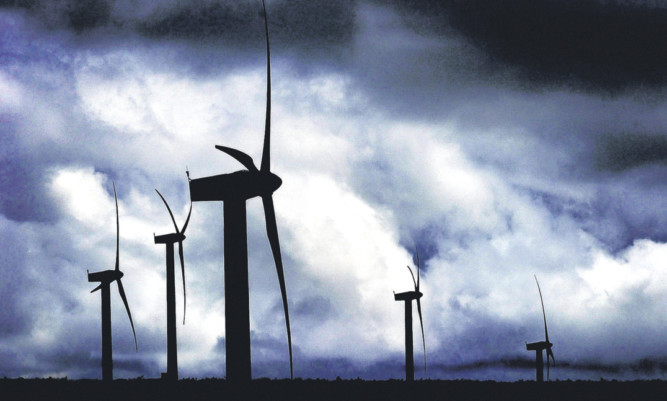Windfarms in Tayside and Fife have been investigated by the Scottish Government over fears they are making people ill.
Ministers commissioned a survey by research group ClimateXChange to examine the visual impacts and effects of noise and shadow flicker from turbines.
Ten sites were examined, including Dunfermline, Little Raith near Lochgelly and Griffin, which lies in Perthshire between Dunkeld and Aberfeldy.
The Fife sites combined have 24,000 people living nearby.
On its website, ClimateXChange said: “Wind farm applications are required to go through a rigorous planning process, including assessment of their potential environmental impacts.
“However, to date, little research has been done to compare the impacts of wind farms as predicted during the planning process and their actual impacts once operational.
“The Scottish Government has asked ClimateXChange to manage a research project looking at whether the impacts predicted by developers in documentation submitted with their planning applications are consistent with the impacts experienced once the wind farm is operating.”
The statement said the windfarms’ operational impacts will be measured through field assessments and local resident surveys.
Its results, due to be published this autumn, will inform the Scottish Government on the need for guidance to developers of windfarms on measuring potential impacts and how this should be communicated to local residents and planning authorities.
Reports suggested around 2,000 questionnaires had been sent to residents across the country.
Other sites identified are Achany in Sutherland, Baillie near Thurso, Dalswinton in Dumfriesshire, Drone Hill near Coldingham, Berwickshire, Hadyard Hill in Ayrshire, Neilston in Refrewshire and West Knock near Aberdeenshire’s Stuartfield.
Ex-Army captain Andrew Vivers says he has suffered from headaches, dizziness, tinnitus, raised blood pressure and disturbed sleep since Ark Hill wind farm was built near his home in Glamis.
The 59-year-old has also raised concerns about an “acknowledged and unexpected increase” of these symptoms in Dundee following the erection of the Michelin turbines in 2006.
“It is bonkers that infrasound low frequency noise monitoring is not included in any environmental assessments,” he said.
No one from the Scottish Government was available for comment.
